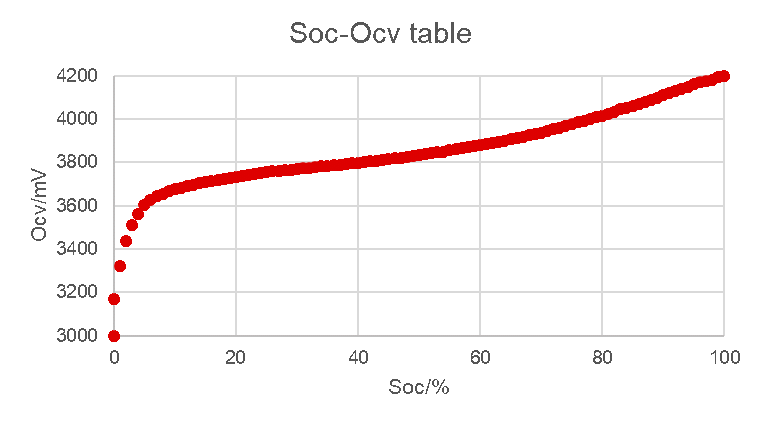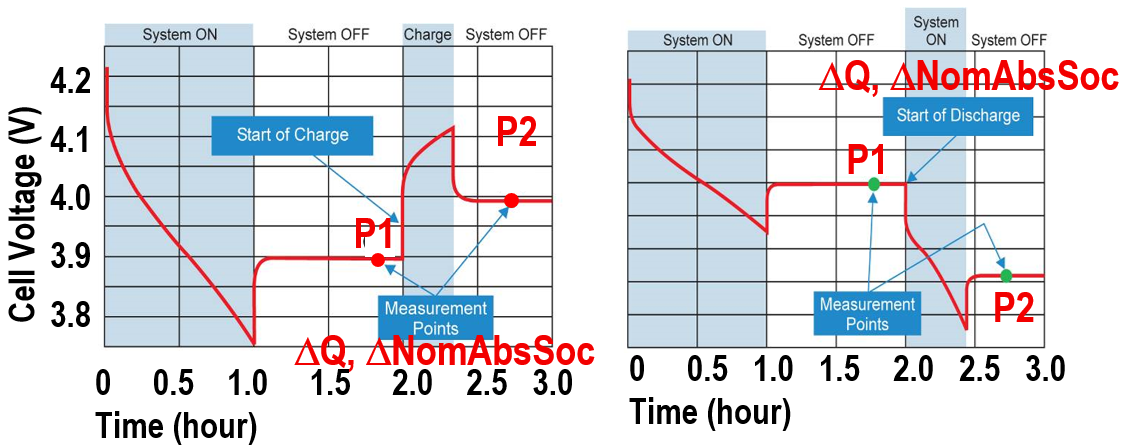SLAAEF5 March 2024 MSPM0G1505 , MSPM0G1505 , MSPM0G1506 , MSPM0G1506 , MSPM0G1507 , MSPM0G1507 , MSPM0L1303 , MSPM0L1303 , MSPM0L1304 , MSPM0L1304 , MSPM0L1304-Q1 , MSPM0L1304-Q1 , MSPM0L1305 , MSPM0L1305 , MSPM0L1305-Q1 , MSPM0L1305-Q1 , MSPM0L1306 , MSPM0L1306 , MSPM0L1306-Q1 , MSPM0L1306-Q1
- 1
- Abstract
- Trademarks
- 1Introduction
- 2Algorithm Introduction
- 3Gauge GUI Introduction
- 4MSPM0 Gauge Evaluation Steps
- 5MSPM0 Gauge Solutions
- 6References
2.2.1.1 Coulometer With OCV Calibration
The common method to update NomAbsSoc is to use coulometer, which is shown in Equation 1 and Equation 2.
As coulometer has error accumulation problems. NomAbsSoc is purely calibrated by using the OCV, which is determined after the battery is rested for enough time. An OCV to SOC search table example is shown in Figure 2-3.
 Figure 2-3 SOC-OCV Table
Figure 2-3 SOC-OCV TableEquation 2 is used to runtime output NomAbsSoc and Figure 2-1 is used to periodically calibrate NomAbsSoc. After two more calibrations, you can get the delta capacity and delta NomAbsSoc. Then, you can calculate the NomFullCap, as shown in Equation 4. Actually, after knowing NomFullCap, Equation 2 can work with acceptable accuracy.
 Figure 2-4 OCV Calibration and Capacity
Accumulation
Figure 2-4 OCV Calibration and Capacity
AccumulationFor a real battery, its NomFullCap will slightly decrease due to the battery getting old. In order to track the capacity decline isssue, NomFullCap should be periodically calibrated. Equation 5 is used to represent the capacity decline, named with State-of-Health (SOH). However, in real applications, as the obtained NomFullCap has erorr, the first obtained NomFullCap is used as the Max NomFullCap.